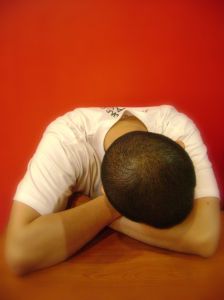By Rania Paula
 Psychologists and physicians estimated that almost 30% of children are suffering with sleep problems at some point during their childhood.
Psychologists and physicians estimated that almost 30% of children are suffering with sleep problems at some point during their childhood.
Child sleep problems may affect both emotional and social behavior, which shows an effect on their school performance. Due to this it is very important for the parents and teachers to understand how important sleep is and how sleep disorders can affect teenagers and children.
Here are the common types of child sleep problems:
• Chronic Lung Disease
• Obstructive Sleep Apnea
• Central Apnea of Prematurity
• Central Hypoventilation Syndrome
Chronic Lung Disease:
Usually this is a result of the premature birth, however this may be secondary to lung injury following neonatal period like in sickle cell disease, aspiration syndrome, and neuromuscular disease like muscular dystrophy.
This disease can lead to low levels of oxygen and high carbon dioxide levels in the blood. Sleep study can determine the lung disease. This can be treated with non-invasive ventilator support, oxygen supply, or during severe conditions tracheostomy may be required.
Obstructive Sleep Apnea (OSA):
This is one of the most common child sleep problems, which is due to abnormalities in breathing when they are asleep. This condition occurs approximately in 2% of kids, and it is most common problem in preschool aged kids.
OSA diagnosis can be done by evaluating your child during his sleep in the sleep laboratory.
Central Apnea of Prematurity:
This is very common in newborn babies. This can be associated with the low heart rate and color changes and it is because of an immaturity of central respiratory drive.
Premature apnea can be evaluated by daytime sleep study or even by cardio-respiratory monitoring. Making your baby to sleep in head elevated tilt position and three-stair-position can help to reduce the problem during the initial stages only.
Central Hypoventilation Syndrome:
This is a problem to the central nervous system that induces signals to breathe. Frequently this can be worsened in the sleep and it is characterized by shallow or even slow breathing, which is inadequate to remove carbon dioxide from lungs.
This may occur while in birth or due to pressure on brainstem. Overnight sleep can be helped to diagnose this. Treatment will be required to relieve brainstem pressure based on the cause.
The support and advice of the health professional or in complex or severe situation a psychologist is necessary for a plan to be successful in dealing with child sleep problems. Sleep programs and educational materials can also be helpful.
– Guest Author, Rania Paula writes for www.sleepwellblog.com. A weblog providing information about various sleep disorders such as insomnia, sleep apnea, restless leg syndrome, sleep deprivation, etc. and there by helping you to have good night sleep.
